20.06.2022
Thinking on practice
Curating
A conversation with Eirini Fountedaki and Kyveli Mavrokordopoulou on curatorial practice
By Eva Vaslamatzi
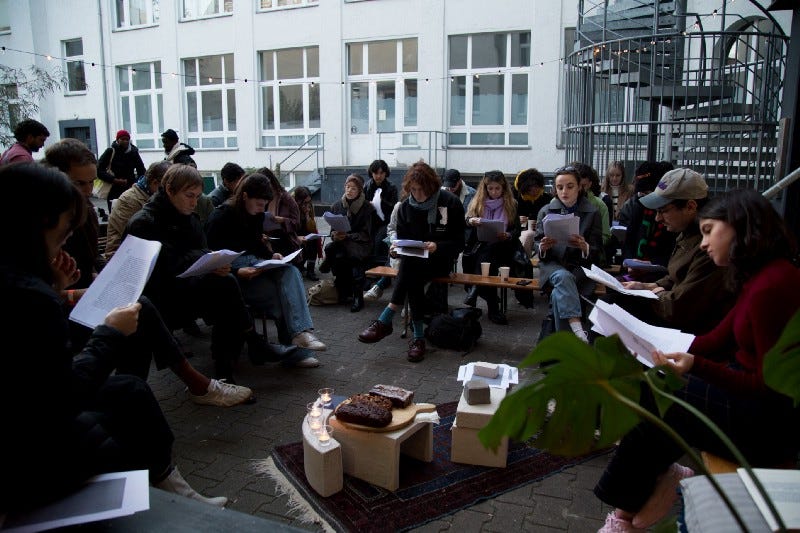
Eva Vaslamatzi
I wanted to have this discussion altogether because I think we share a lot in common in our curatorial practice, even though we deal with different topics and mediums. Something that struck me as I was reviewing the material you both sent me in advance of this conversation is the concept of the expert, which interests me personally.
Kyveli Mavrokordopoulou
The concept of scientific expertise interests me a lot too. With the issues I deal with, which amongst other things concern very technical knowledge about nuclear waste and their storage, the concept of expertise plays a significant role. The uncertainty posed by nuclear waste that remains toxic for millions of years completely challenges the possibility of such expertise completely. Such complex systems with the fundamental uncertainty they entail, somehow force us into a form of interdisciplinarity. I come to the projects I organize from the field of art history and enter into discussion with a biologist or a chemical engineer, and what we have to offer to the discussion is equal. These are the moments when the hierarchy of knowledge is leveled by the uniqueness of the problem.
Eirini Fountedaki
And how do you think about the concept of expertise in relation to curatorial practices?
K.M.
I feel that the concept of expertise is, in this case too, futile. For example, as I prepared for the workshop “Nuclear Polders” I am organizing this May with artist Agnès Villette, for the arts organization Sonic Acts (Amsterdam) on nuclear plant built on reclaimed land, I learned from an activist about what is happening in Gravelines, France: aging nuclear infrastructures are being threatened by imminent water-level rising brought on by climate change. This is also happening on coastlines in the Netherlands (Borssele) and Belgium (Doel). Based on discussions about this, the curatorial idea emerged. Also, I organize tours in nuclear facilities, which I perceive as a form of curatorial practice. I mean, this exchange and interdisciplinarity, or being part of a group, is essential for my practice. And this is the opposite of the curator as expert.
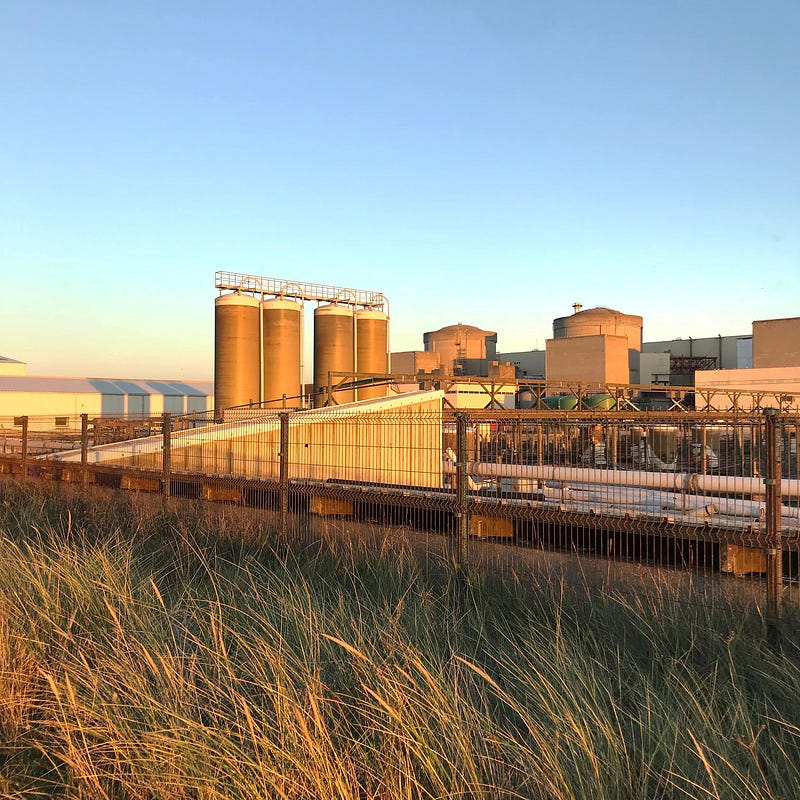
E.V.
I think that the notion of the curator as expert does not make sense due to the nature of this job. It is a topic that you can study, but you actually learn it through practice. It also consists of so many things, it’s hard to define it in a sentence. And it is as if there is a gap that curators are often trying to fill by bringing in people from other specialties in the process, accepting their own limitations.
E.F.
I believe that curating can at least promote a different epistemological approach, because the academy has specific methodological tools and a very specific vocabulary. So, I think curating is this “gray zone” where you can invite people who represent a kind of embodied knowledge. Thinking of the film series “Residing in the Borderlands” (2019–2020) that I co-edited with Pia Chakraverti-Würthwein at SAVVY Contemporary (Berlin) I remember that we wanted to get away from the idea of a (film) expert and of who can talk about a film. We wanted to recreate a map of Berlin, talking about the different paths that Berlin communities have taken since the fall of the wall, exploring the stories of different diasporic communities. We felt the guests we invited were experts in their own way, because they had experienced things that academics usually know through books. We had approached, amongst others, a Palestinian who has had a falafel truck near the SAVVY building for thirty years and the Vietnamese-German filmmaker Angelika Nguyen that had grown up in East Berlin and experienced its transition. For me, curating can change the idea we have of who qualifies as an expert, and who has the right to speak on specific issues.
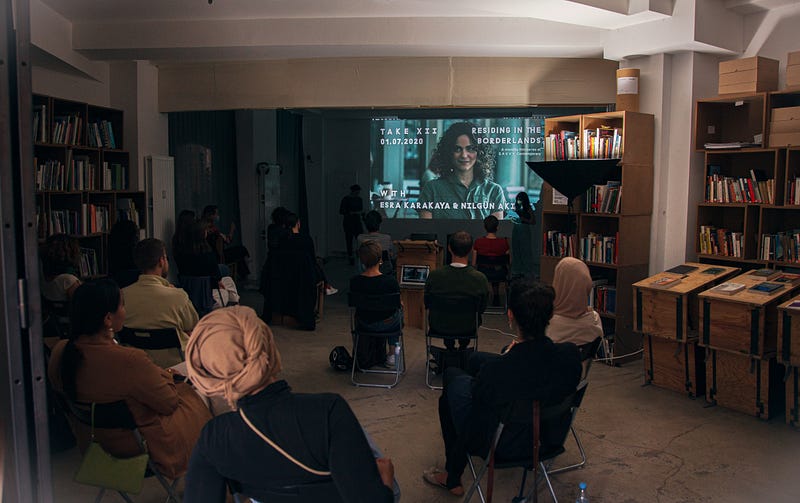
K.M.
Let me also say that in the field of art we sometimes have an outdated view of what the academia is. One of the reasons I started thinking about the importance of mainstream knowledge is through the academic work of geographer Shilol Krupar, which is a reference for me. Especially a book she wrote in 2013 called “Hot Spotter’s Report. Military Fables of Toxic Waste” which looks at the chemical and radiotoxic remains of cold war military nuclear production. The narrator constantly switches between different personae, fictional and real, and tells the story of these sites through different positions (as a researcher, as a nuclear scientist, as a drag queen) that activates a queer narrative. There are increasingly links between academia and more curatorial approaches to an issue.
E.V.
Since you mentioned it, as I read the text you co-authored with Agnes Vilette in 2021 titled “Nuclear Polders in Limbo” (Sonic Arts Magazine, forthcoming) I was wondering about the role that narrative plays in your writings. As the subject you are working with is quite specialized and has complex terminology, I guess that you have to find a way to pass the story on to the reader. And this can’t be done in academic terms.
K.M.
For me too, to move on to a theoretical level or to think of terms that express the complexity at work in nuclear landscapes, I need to go through narrative, as a mode of meaning production. The text you mentioned describes the moment we arrived with Agnes at a huge nuclear facility outside Dunkirk, in Gravelines, France and our first impressions and feelings upon arriving. For example, we were walking in the sand and we had this feeling of holidays by the beach and when we turned around we saw six nuclear reactors. To share this experience as an entry point in my subject is much more important than to start with historical information, to the extent that these issues have been monopolized by scientific discourse. Especially in Dunkirk where such issues create emotions and bring communities into conflict, a situation that transcends science and is positioned as a reality inside the community.
E.V.
It is important both for ourselves and the public to make things accessible and understandable; it’s the curator’s responsibility. A film is probably more accessible as a medium than contemporary art, and so are books. You are both working a lot with the medium of publication. Eirini, I had read an excerpt in which you state that you perceive a publication as a continuation of an event.
E.F.
Yes. Take for example the publication “How Does the World Breathe Now? Film as witness, archive, and political tool” (Archive Books, SAVVY Books, 2021). For me, this book went beyond its role to record what has happened and actually took some of the themes that had emerged from the eponymous film series (September 2016-March 2018, co-directed by Elena Agudio, Antonia Alampi and Pia Chakraverti-Würthwein, and initiated by Bonaventure Soh Bejeng Ndikung) and took them one step further. Some of those we invited to participate in the publication were not part of the film series but we felt that they could potentially talk about the topics that had already been raised. So, the publication can in itself be a curatorial work that can continue a theme in another form. I do not understand the publication only as an archive. For me it is a project in itself. Kyveli, were the publications you have edited standalone editions or were they related to a program?
K.M.
I have usually worked on publications as standalone projects, as opposed to using them as continuations of existing ones. Both publications I made, “Nuclear Aesthetics” (2018) and “Hot Pictures” (2021), were openings to something else as it was a way for me to enter into dialogue with a circle of people I’m still talking to today. In our project “Nuclear Polders” with Agnes we have been very concerned with the idea of restitution. We had collected discussions with various people — a fisherman who was involved in a scandal of toxic fish served at a restaurant in Dunkirk, an activist belonging to groups formed in post-Chernobyl France, a former worker and students from the School of Fine Arts of Dunkirk — along with photographs and sound recordings. As an artist, Agnes suggested that we do an installation but I too had difficulty in projecting all this information into something three-dimensional. It was much easier for me to imagine making a publication.
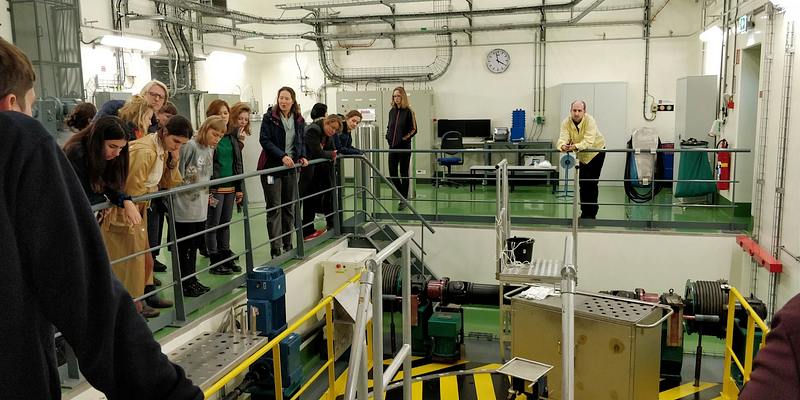
E.V.
Since you mention this relationship with Agnes, I would like to hear more about the collaborations you both have in your practices with other curators or artists. You have both been very involved with this, as well as with collective writing and participating in reading groups, etc.
E.F.
Personally, I do not enjoy the process of doing things on my own because I usually learn a lot less that way. But in my case I think it has to do with the fact that I am also allergic to the idea of the figure of the curator who wants to get all the attention. I mostly see us as intermediaries. I like to learn to let things take shape with influences from many different practices and backgrounds, and I also like when responsibilities are shared based on everyone’s strengths. For example, I’m part of the Berlin-based Cruising Curators collective, in which each of us has a different expertise. When we write a text collectively it takes a form after so many back and forths that I could not have imagined had I written it myself. We started as a reading group, and became friends. During the pandemic we wanted to read and think together and later we decided to make this private experience public.
K.M.
I have also had regular companions, two or three people that I met at the beginning of my doctorate and the dialogue that took different forms emerged effortlessly. Through this collaboration, I believe that something very different emerges in terms of quality. Concerning collective writing we invent ways and working methodologies. For example, in our text “Nuclear Polders in Limbo” with Agnes we started by sending word lists to each other and little by little the text was formed. It was very interesting because although a list categorizes, it is not a closed system and is never really complete. However,I must say that the labor market and system are still organized around this romantic idea of the artist as an individual, the aching hero that creates on their own.
E.F.
However, this idea of the curator working alone is very false. That is, if you look even in institutions, sometimes a large part of the work is done by the assistant curator, the one who does curatorial research, those who literally set up the exhibition (art handling), and many other people-mediators in the process, but hierarchically most credits are taken by the curator. I find it useful for someone to try to resist this logic, and to record as equal partners all the people who helped to shape both the idea itself and its implementation.
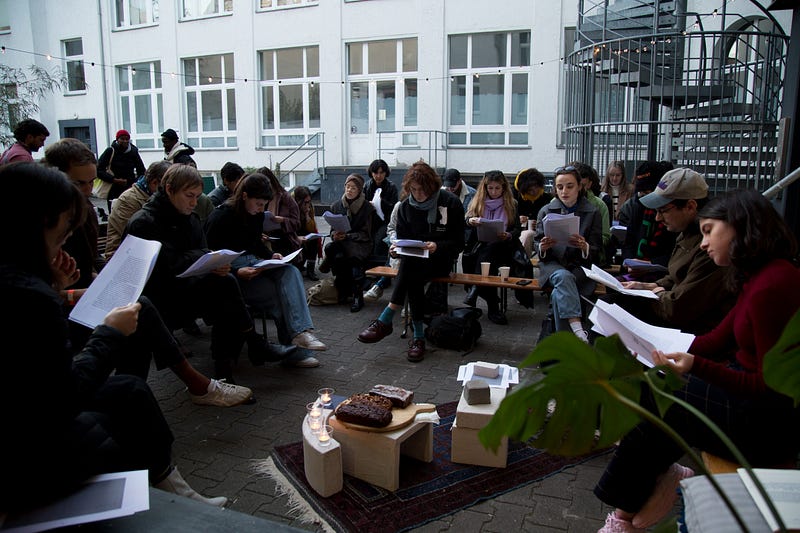
E.V.
It’s interesting to see that what we discuss so far is somehow linked to this question of the “right” credits and the labor system. The impossibility of the expert in our field, the importance of interdisciplinarity and collaborations, as well as the exploration of different forms for curatorial practice outside the traditional exhibition format that promote the figure of the successful curator. Before the end of the discussion, I would like each of you to tell me in two words how you perceive your curatorial practice.
E.F.
It has a lot to do with the background with which one enters into curating. I come from a musical background and I think first through the sound and then visually, so the term “curator of visual art” seems very restrictive to me. Even when I make an exhibition it has to do with media that evolve over time, like videos or an audio project that is more “Intangible” and addresses different senses beyond sight. Curating has to do for me with how we perceive time. But also, I believe that we should be aware that we are building a narrative through our practice. It’s like a playground for politics.
K.M.
I see curating as a form of research that gives me different tools to pursue what I do as an academic researcher. Also, it opens up another audience, beyond what I usually address and it activates connections. Curating gives us the opportunity to open up to other fields and people that we would not otherwise do, on freer terms.
Eirini Fountedaki (SNF ARTWORKS Curatorial Fellow 2020) is an independent curator and writer based in Athens and Berlin.
Kyveli Mavrokordopoulou (SNF ARTWORKS Curatorial Fellow 2020) is art historian, critic, and curator.
Eva Vaslamatzi (SNF ARTWORKS Curatorial Fellow 2019) is an independent curator and writer currently based in Athens, Greece.



